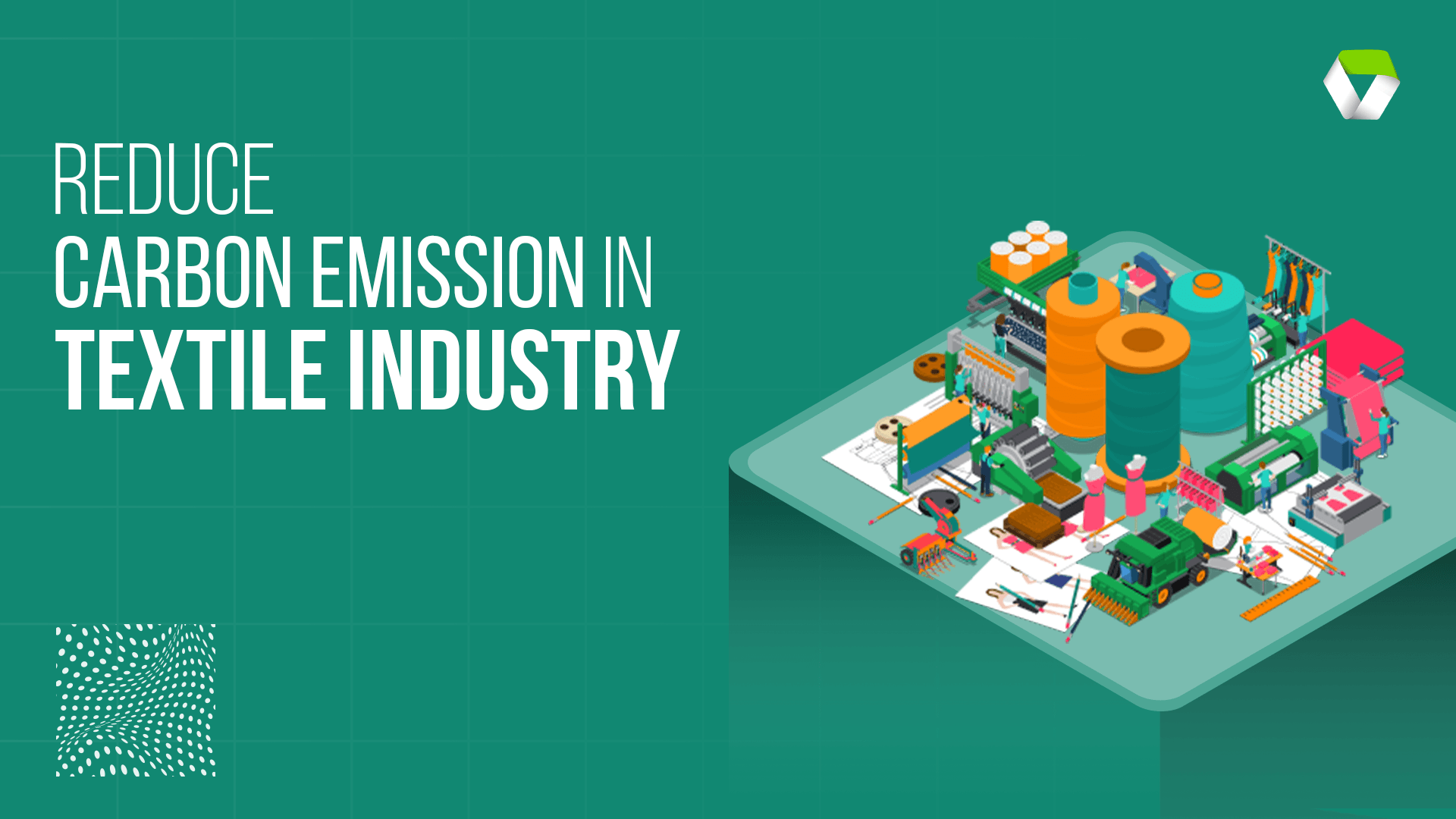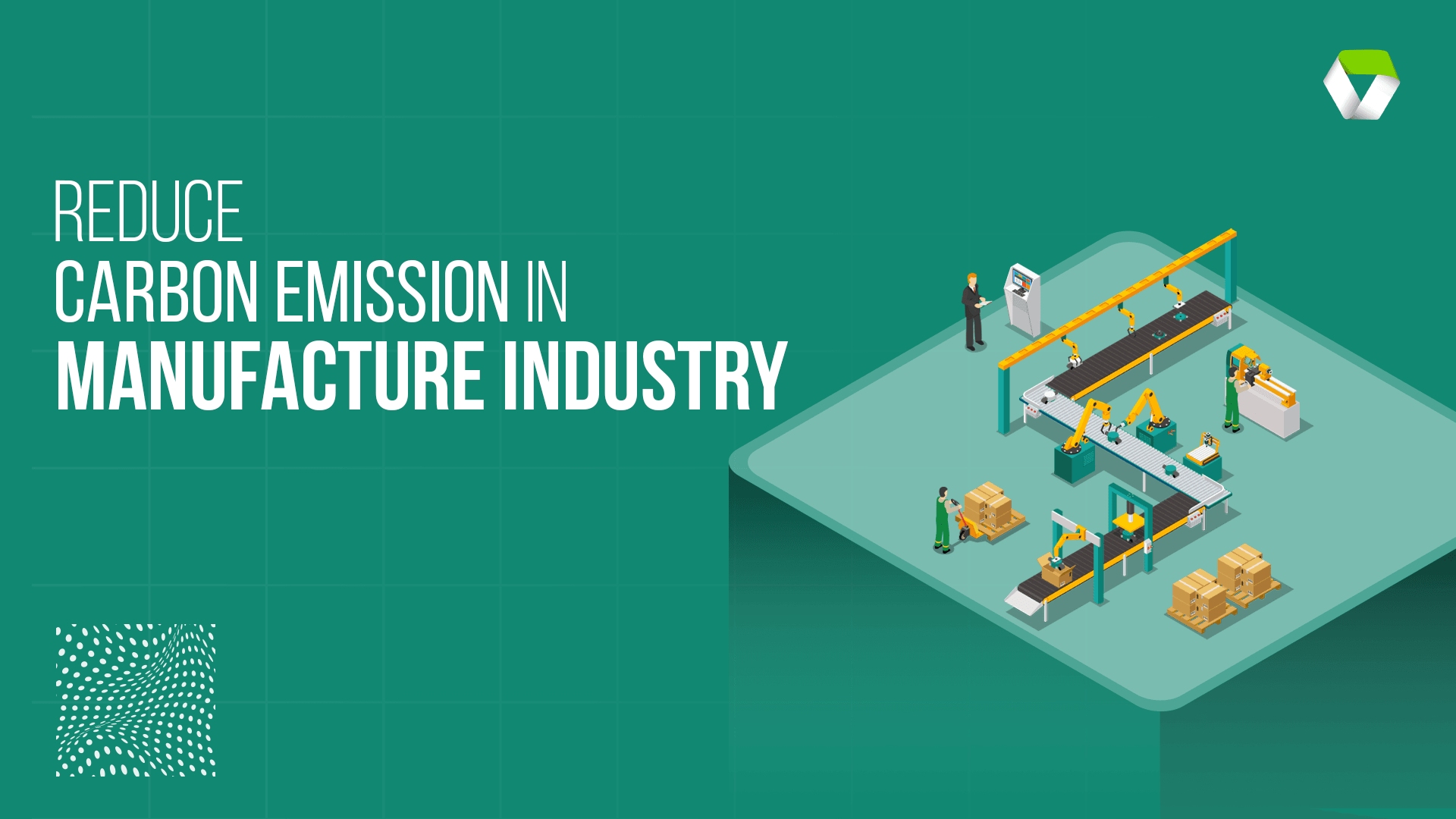10 Ways in which a Textile industry can reduce its Carbon (GHG) emissions

The textile industry significantly contributes to global Greenhouse gas (GHG) emissions, accounting for around 10% of total carbon emissions rivaling sectors like aviation and shipping. To combat climate change, it's imperative for the textile industry to adopt sustainable practices and reduce its carbon footprint. In this article, we discuss 10 strategies for businesses in the textile industry to minimize their carbon emissions, reduce environmental impact, and transition towards a more sustainable future.
Understanding the Textile Industry's Carbon Footprint
The textile industry's impact extends far beyond the finished product. From the cultivation of raw materials to the disposal of textile waste, the industry contributes significantly to environmental degradation and climate change. The substantial carbon footprint stems from various stages of the textile lifecycle, from raw material cultivation to production, transportation, consumption, and disposal.
Key emission sources include:
- Raw material production: Cotton cultivation is particularly water-intensive and reliant on pesticides, while synthetic fibers are derived from fossil fuels.
- Textile manufacturing: Energy-intensive processes like spinning, weaving, dyeing, and finishing consume vast amounts of energy, often from fossil fuels.
- Transportation: The global supply chain necessitates long-distance transportation of materials and finished products, leading to substantial emissions.
- Waste and disposal: Landfills emit methane, a potent greenhouse gas, when textile waste decomposes.
The Imperative for Sustainability
Multiple factors drive the urgency for textile companies to adopt sustainable practices. Growing environmental consciousness is shifting consumer preferences towards sustainable brands and increasing regulatory pressures as governments worldwide are imposing stringent environmental regulations calls for a sustainable shift in Textile industry. Addressing climate change risks protects businesses from potential disruptions and financial losses. But beyond that reducing energy consumption, waste and optimizing operations can yield significant financial benefits and cost savings for businesses. A strong commitment to sustainability enhances brand image and attracts environmentally conscious consumers.
Ten Steps to Reduce Carbon Emissions in Textile
- Set Ambitious Targets and Monitor Progress
Establish clear and measurable carbon reduction targets aligned with science-based targets. Implement key performance indicators (KPIs) to monitor progress regularly.
Conducting a Life Cycle Assessment (LCA) regularly to assess the environmental impact of products throughout their lifecycle can help identify areas with the highest environmental impact and prioritize improvement efforts. By calculating their carbon footprint, textile companies can strategically take necessary steps for carbon offsetting or invest in carbon reduction projects, like reforestation or renewable energy projects. - Embrace Sustainable Materials
Choosing sustainable materials is the first step towards reducing GHG emissions. Prioritize organic cotton, recycled polyester, and other low-impact fibers. You can also explore innovative materials like Tencel, bamboo, and hemp. For example, Tencel is derived from renewable wood sources and produced through an eco-friendly process has a lower environmental impact than conventional rayon. You can reduce reliance on virgin fibers by setting targets to increase the use of recycled fibers and bio-based alternatives. - Optimize Production Processes
The production of textiles is energy-intensive and is a major contributor to its carbon footprint. Upgrading to more efficient machinery, optimizing production processes, and implementing energy management systems can significantly reduce energy consumption and GHG emissions. Additionally, regular maintenance of equipment can ensure it operates at peak efficiency. - Transition to Renewable Energy
Switching to renewable energy sources such as solar, wind, or hydro power can drastically cut GHG emissions. Textile companies should consider installing solar panels on factory roofs, purchasing green energy from suppliers, or investing in renewable energy projects to offset their energy use. Conduct regular energy audits to identify areas for improvement and implement energy-saving technologies like LED lighting and high-efficiency motors.
- Reduce Chemical Usage
The use of chemicals in dyeing and finishing processes can lead to significant GHG emissions. By switching to eco-friendly dyes and chemicals, companies can reduce their environmental impact. This includes using chemicals that require less water and energy to use and that are less toxic, reducing the GHG emissions associated with water treatment and pollution control.
Adopt low-impact dyeing techniques like digital printing or natural dyes to reduce chemical usage. Also, consider implementing a Chemical Management Program (CMP) to track and control chemical usage. - Enhance Supply Chain Transparency
Optimizing the supply chain can lead to significant reductions in GHG emissions. This involves localizing production to reduce transportation emissions, choosing suppliers with strong environmental credentials, and implementing just-in-time production methods to reduce inventory and associated emissions. Encourage suppliers to adopt sustainable practices by establishing clear sustainability criteria and provide support for their improvement efforts. Partnering with suppliers committed to sustainable practices and implementing traceability systems to track materials from farm to factory. - Design for longevity
Creating products that last longer can greatly reduce the GHG emissions associated with the production of new textiles. Companies should focus on quality and durability, encouraging consumers to buy less frequently and reducing the overall demand for new textiles. Implement design for disassembly and recycling programs to minimize waste. Patagonia's Worn Wear program encourages customers to repair or recycle old clothing. - Foster Circular Fashion
Adopting circular economy practices is essential for reducing GHG emissions in the long term. This includes designing for recyclability, exploring opportunities to create new products from textile waste, offering product take-back schemes, and supporting the second-hand textile market. By keeping materials in use for as long as possible, companies can reduce the demand for new raw materials and the associated GHG emissions.
Minimizing waste not only reduces the need for raw materials but also decreases the GHG emissions associated with waste disposal. Companies can reduce waste by designing products with minimal offcuts, recycling scraps and defective items, and improving quality control to reduce the number of defective products. - Invest in Technology
Adopting advanced technology and digitization can play a major role in reducing carbon emissions in the Textile industry. This includes everything from upgrading to state-of-the-art equipment with higher energy efficiency ratings to using data analytics to optimize production processes, reduce waste, and improve supply chain efficiency. You can also use carbon accounting software like Sustainium can help you monitor and optimize your emissions across different stages and locations. Sustainium’s AI-based platform is intuitive, comprehensive, accurate, reliable, and affordable to all organizations. - Educate and Engage Stakeholders
Engaging with consumers is crucial for reducing the carbon footprint of textiles. Companies should educate consumers about the environmental impact of their purchases and encourage behaviors like buying less, choosing sustainable options, and proper care of textiles to extend their lifespan. Participate in industry initiatives and partnerships to share best practices and engage with policymakers to advocate for supportive regulations and incentives.
Building a sustainable future Textile industry
The textile industry faces a significant challenge in reducing its carbon footprint. However, by embracing sustainable practices, investing in innovation, and collaborating across the value chain, it is possible to build a more environmentally responsible future.
Technological advancements offer promising solutions in optimizing resource usage and reducing environmental impact from farm to store. Digital platforms can enhance supply chain transparency, while innovations in material science and production processes can reduce environmental impact. For instance, advancements in textile recycling technologies are making it possible to recover valuable fibers from discarded clothing.
Encouraging consumers to adopt sustainable habits is crucial. Promoting repair, reuse, and recycling can extend the lifespan of garments, reducing the demand for new production. By implementing strategies for carbon reduction and making sustainable choices, textile companies can make significant strides in reducing their carbon footprint and building a more sustainable future.
Calculate and reduce the carbon footprint of your organization with Sustainium. Talk to us.






